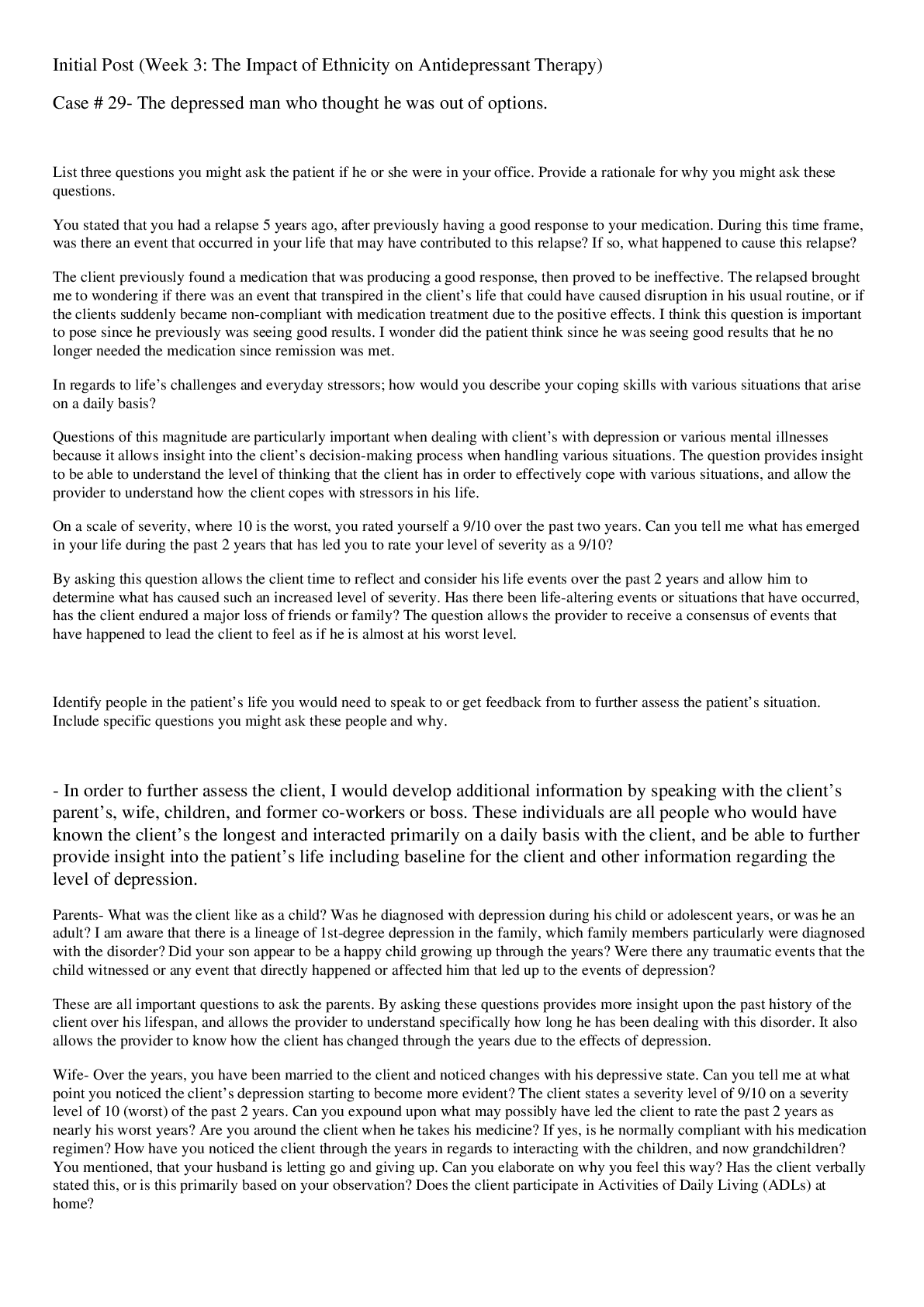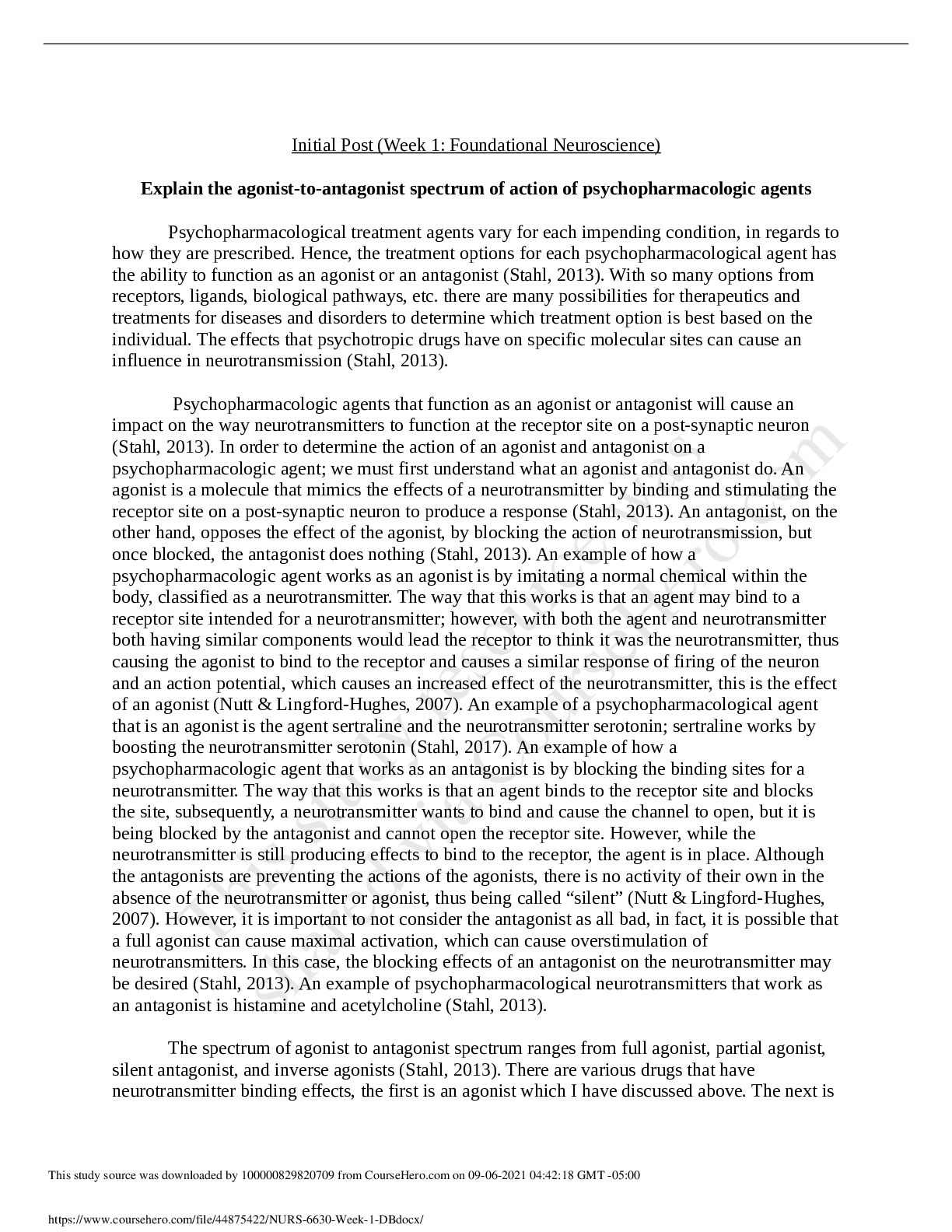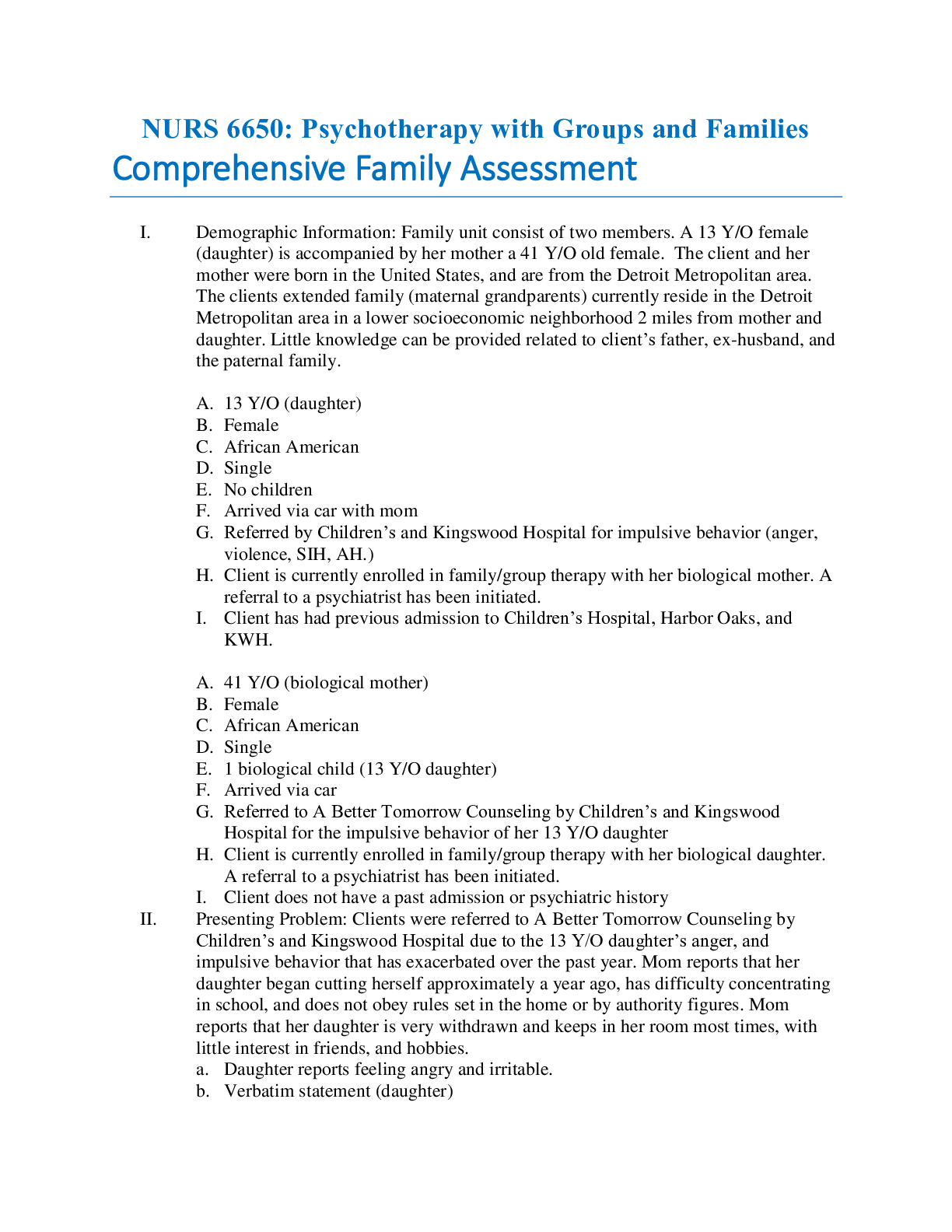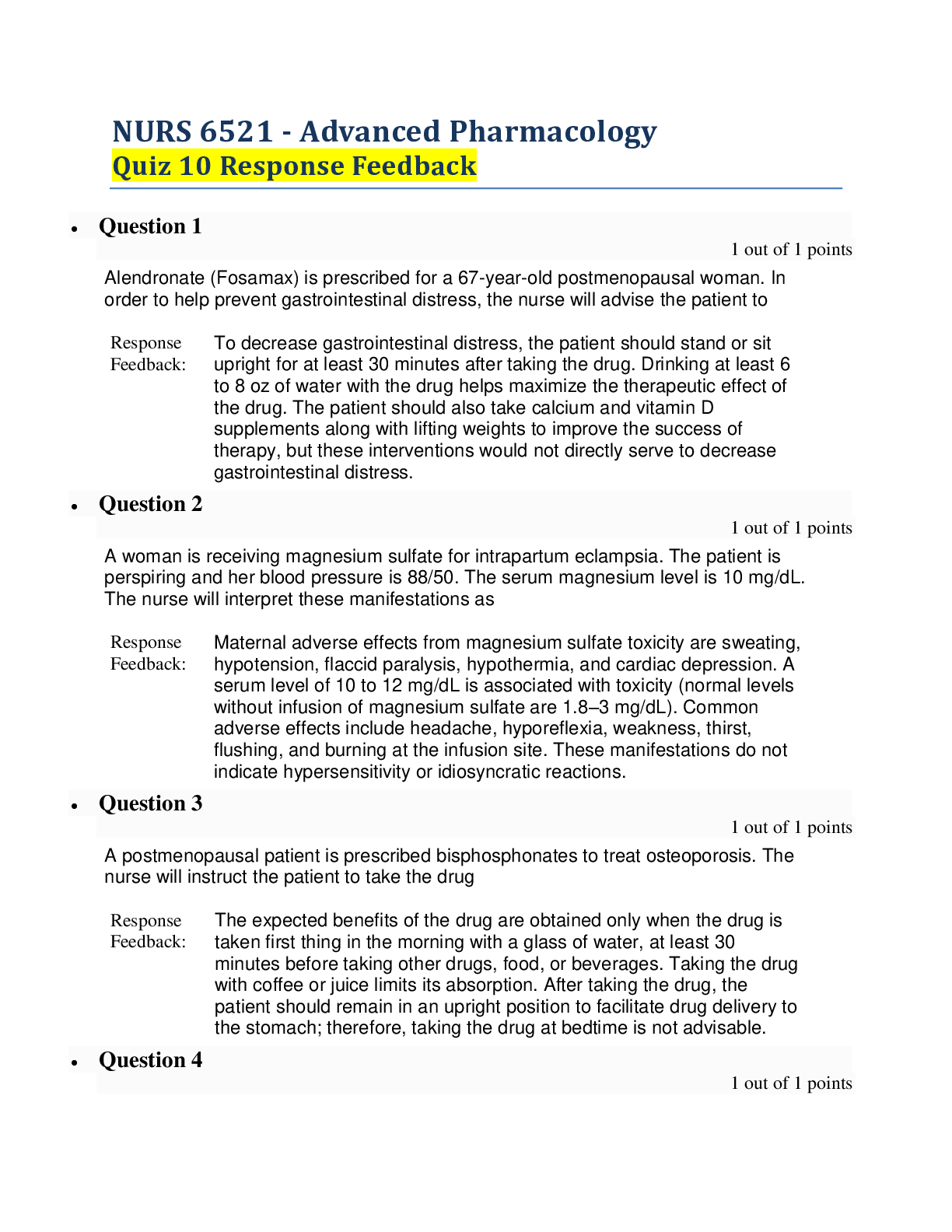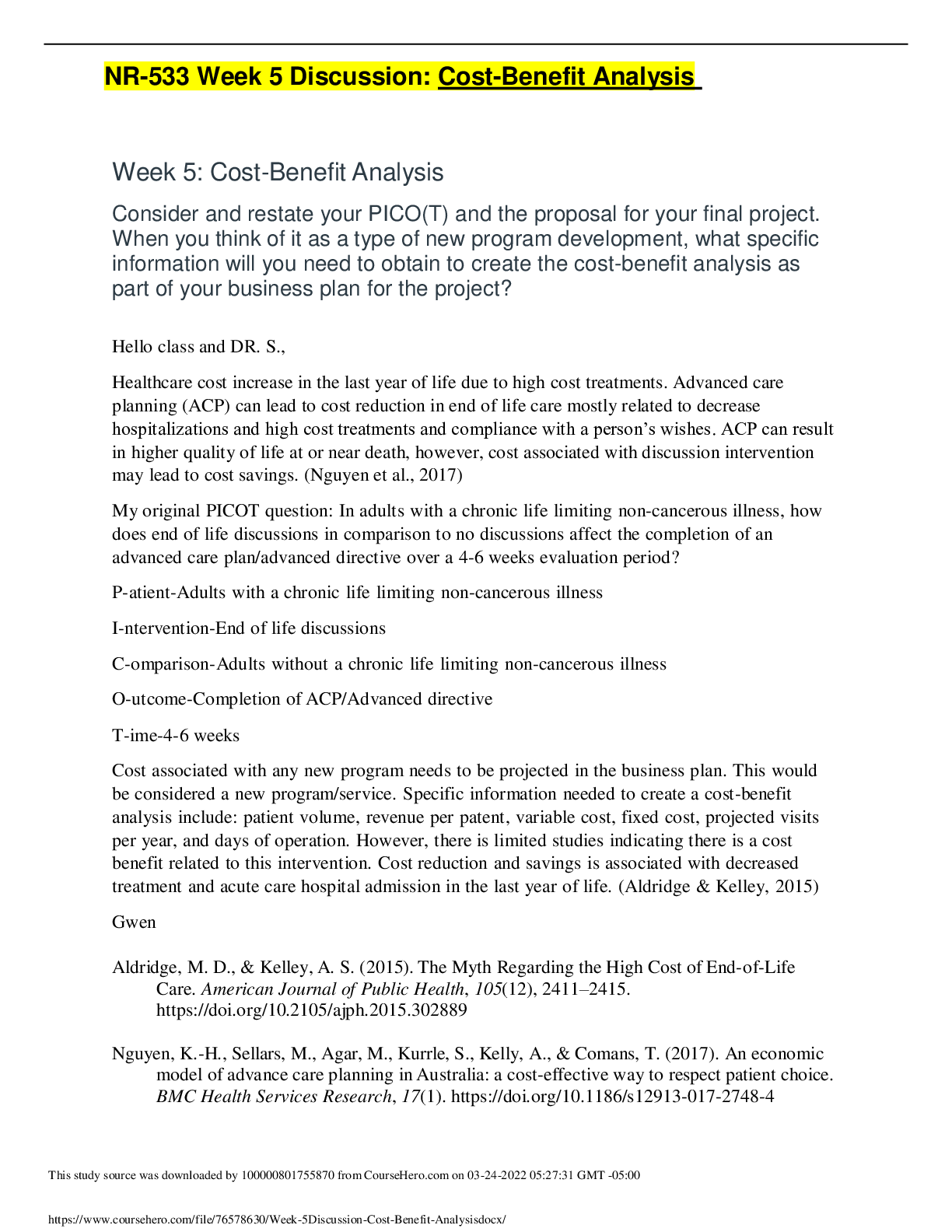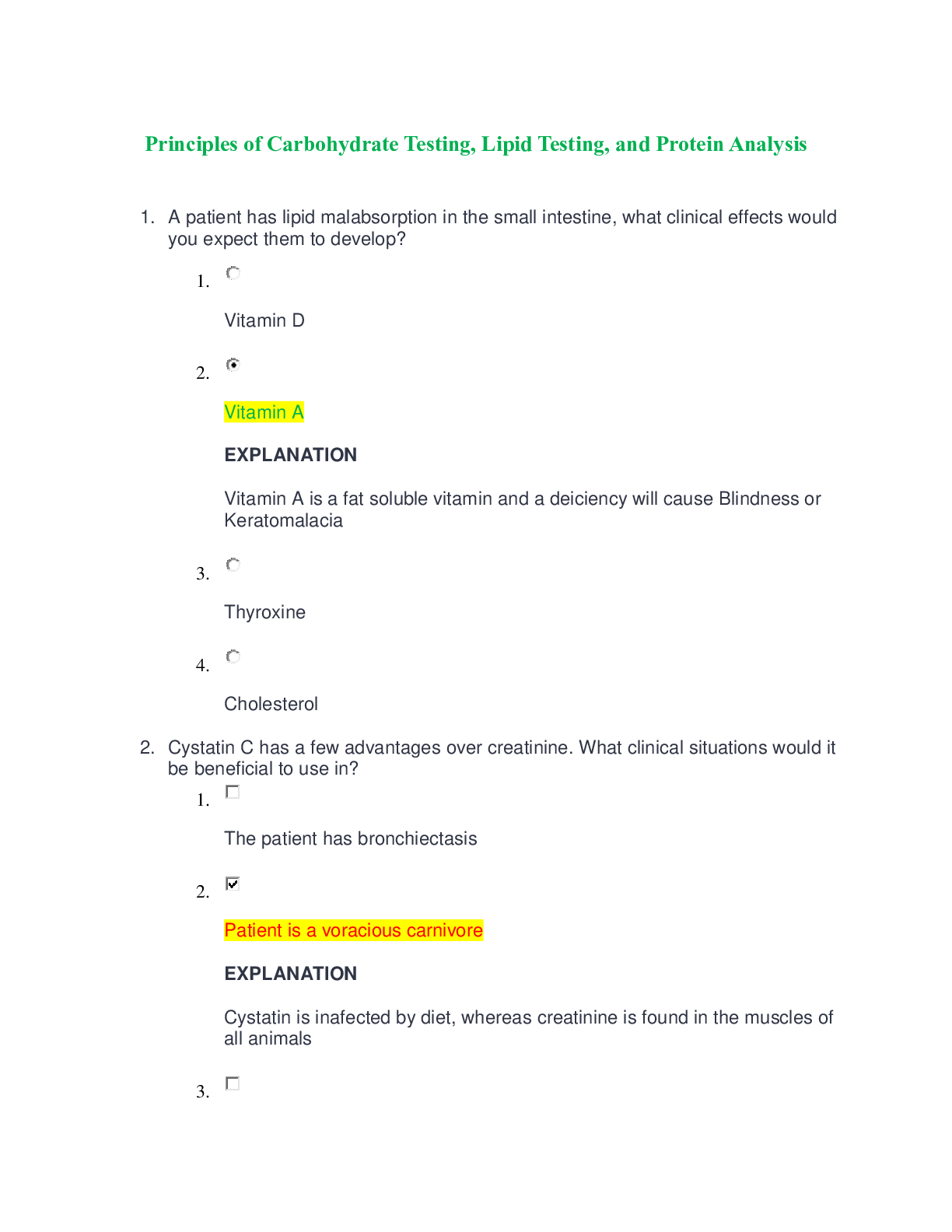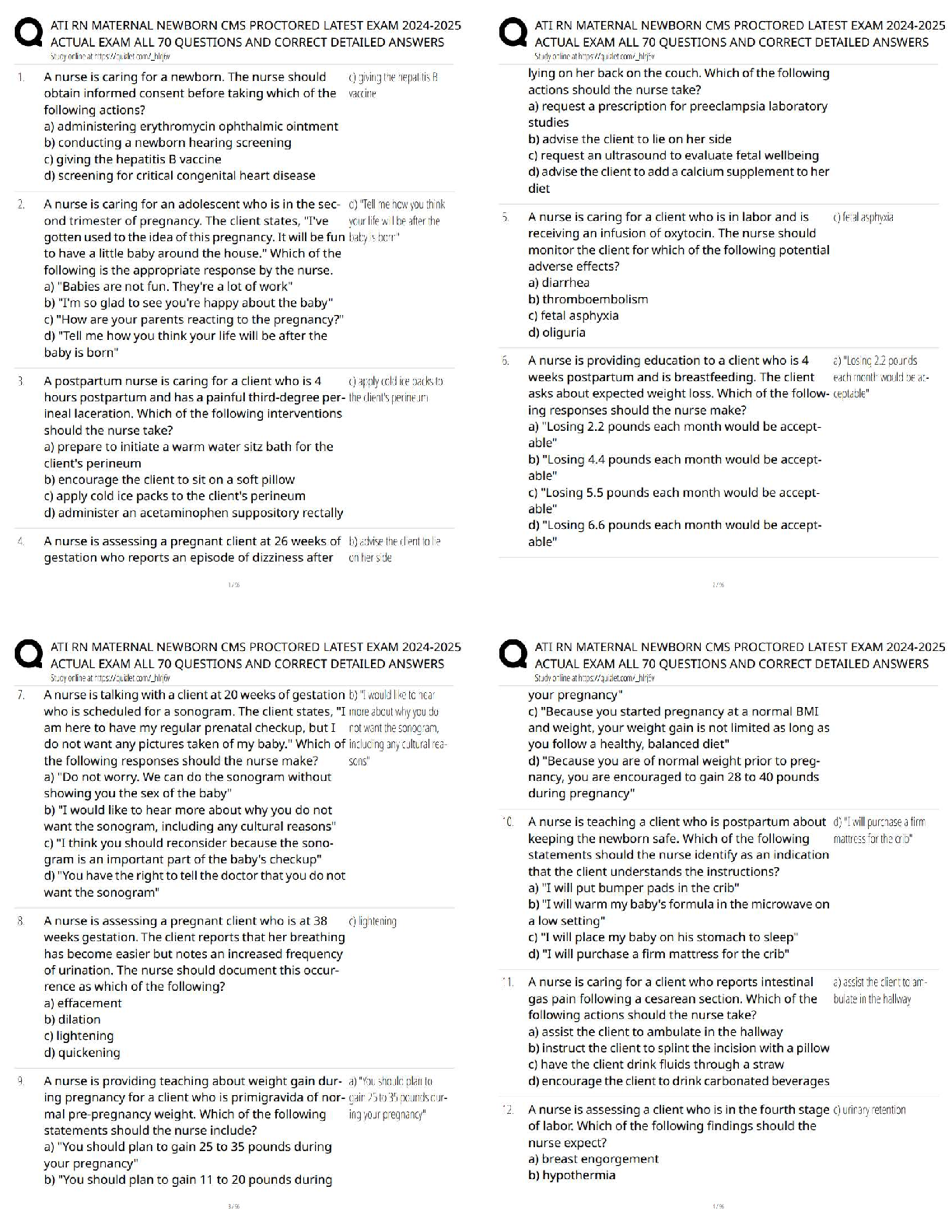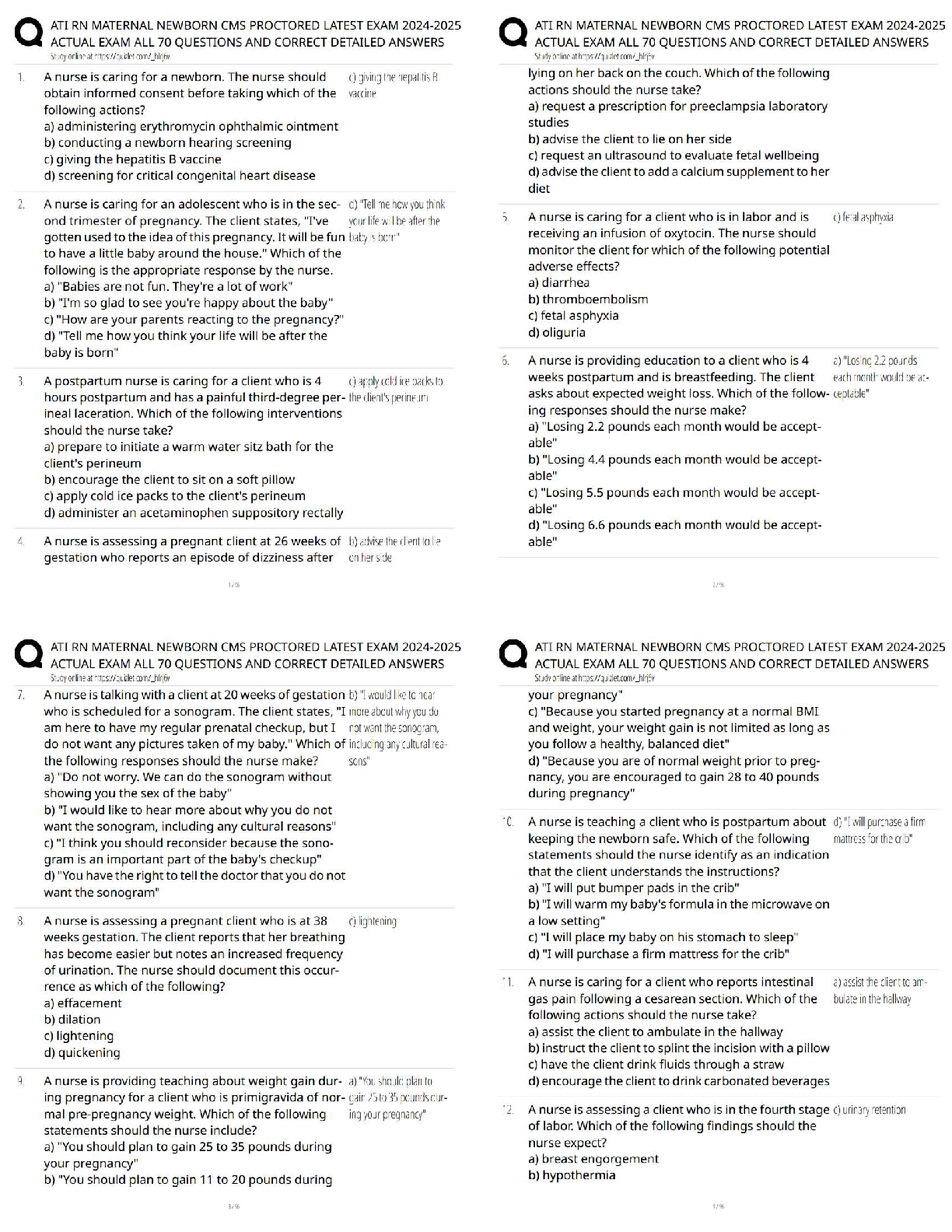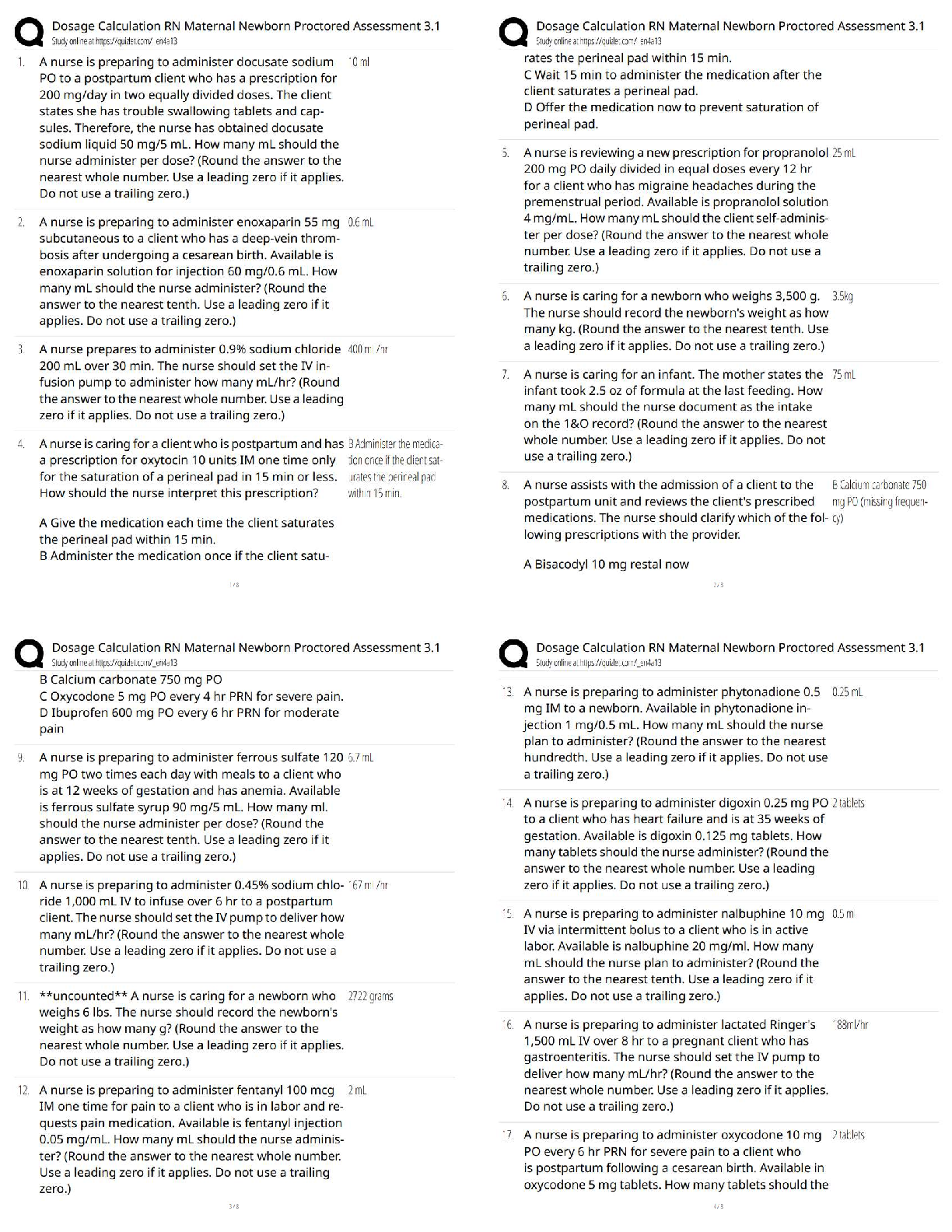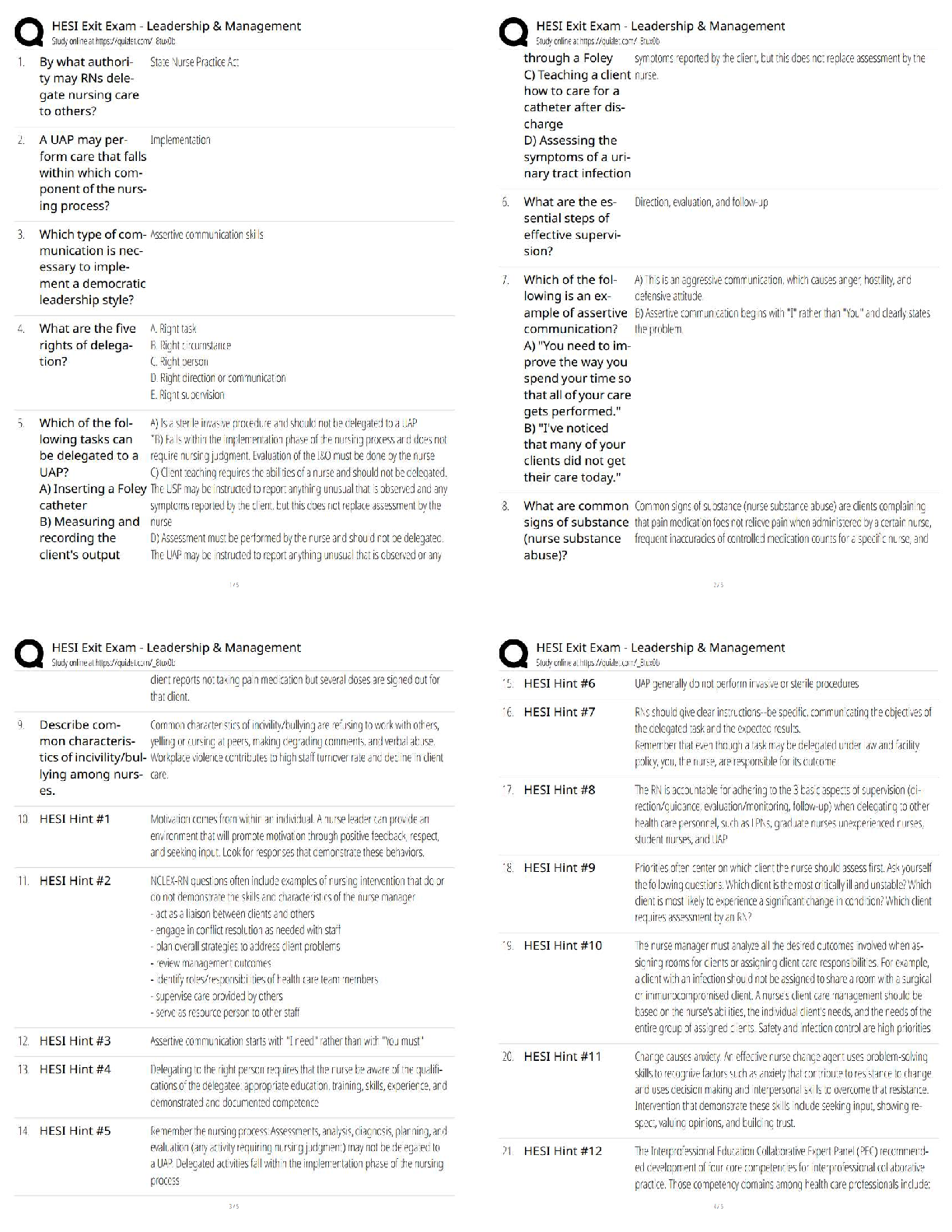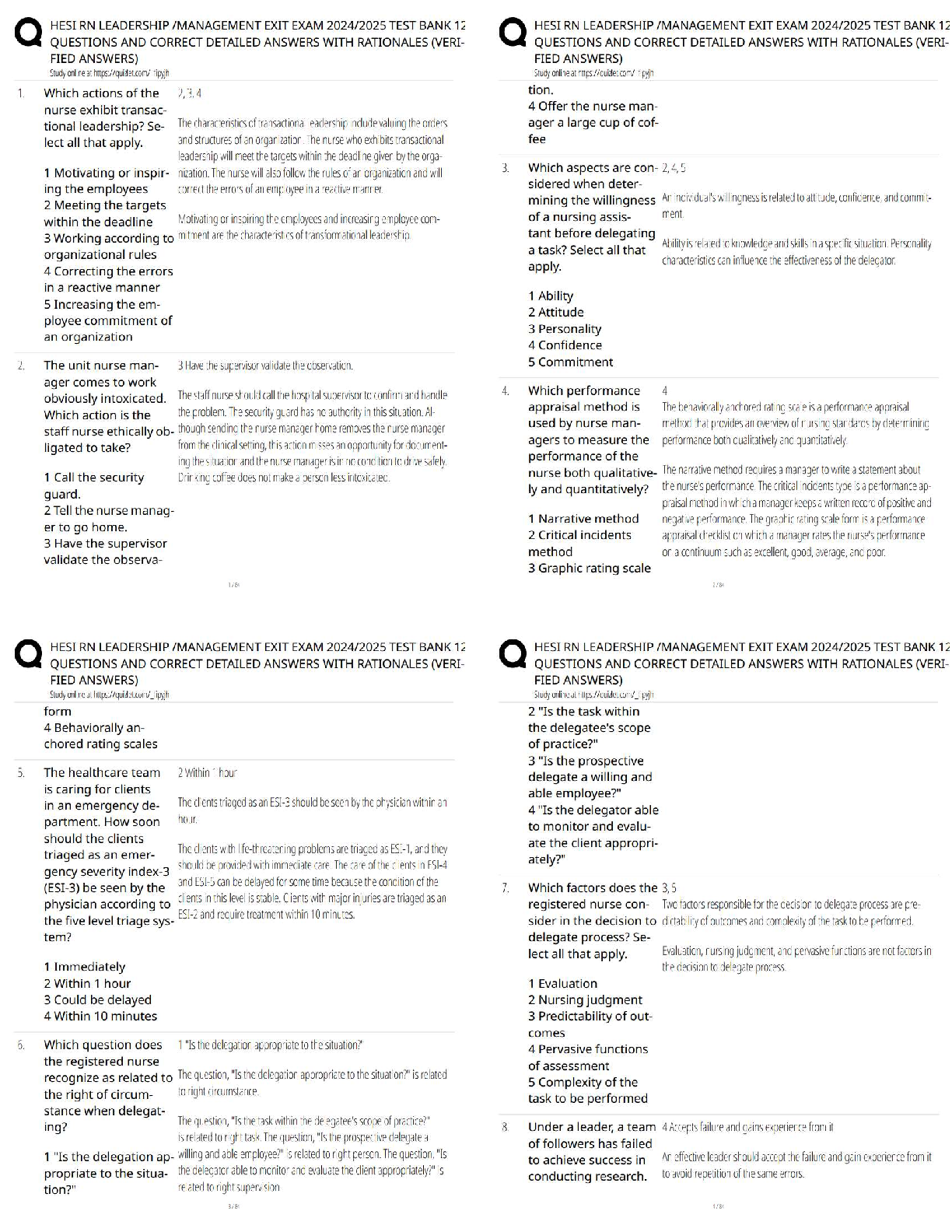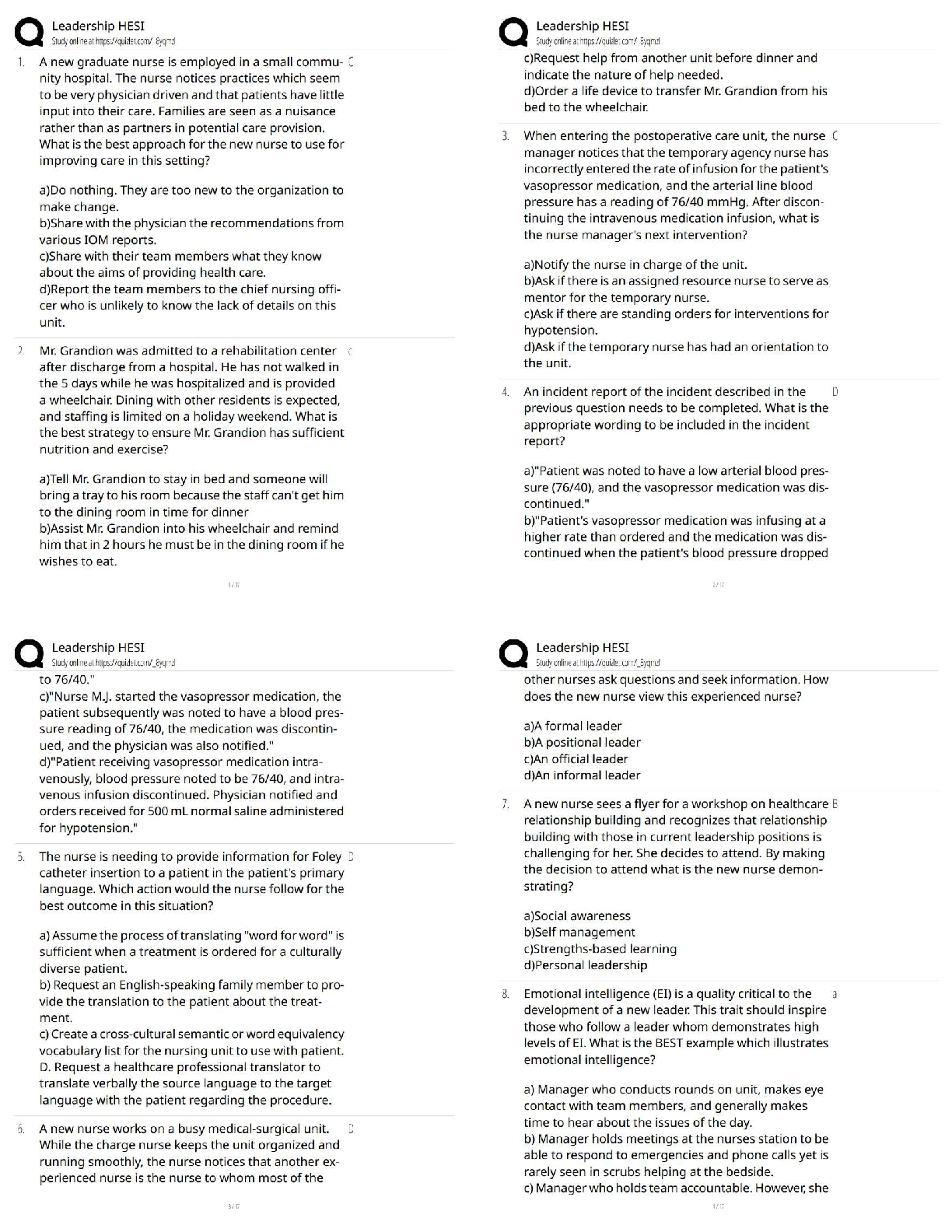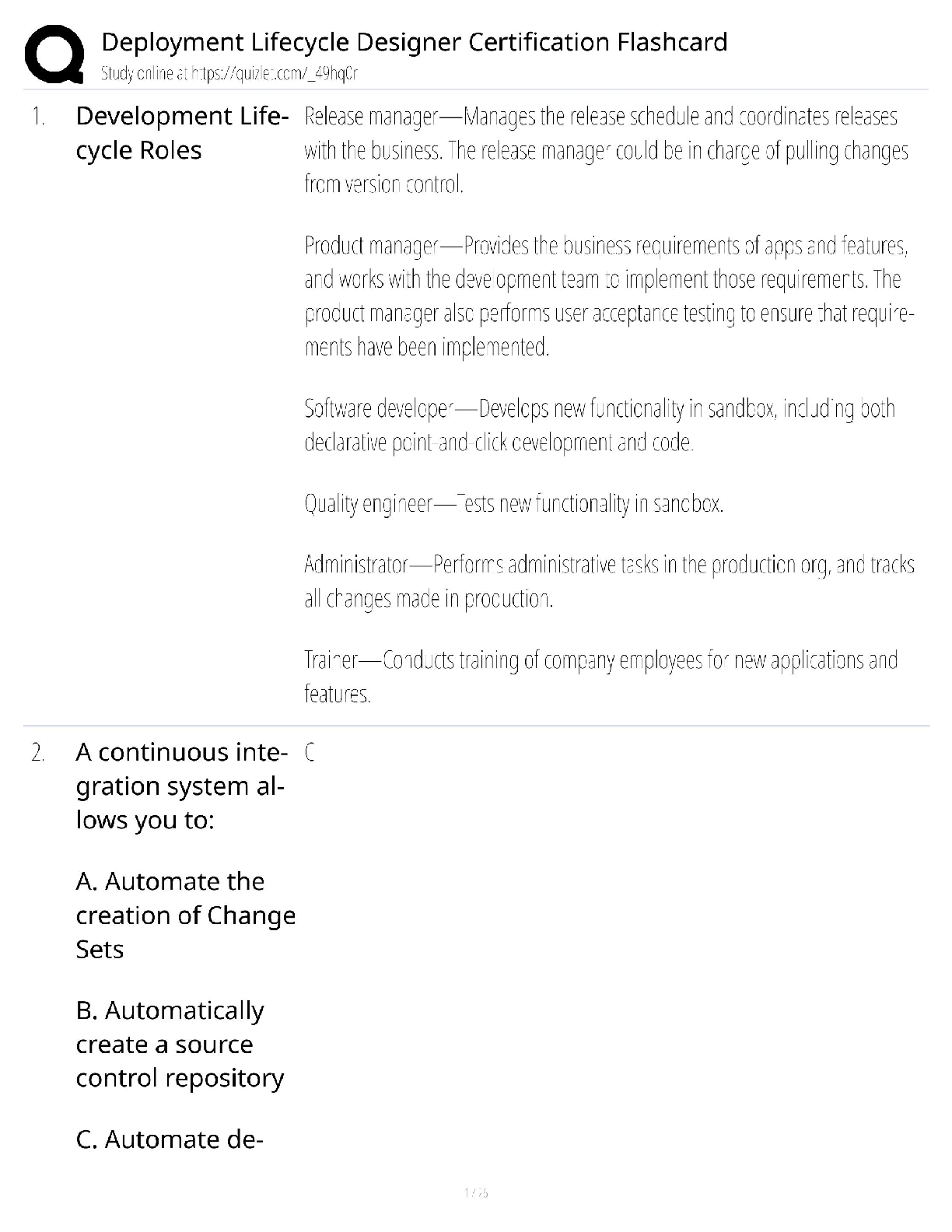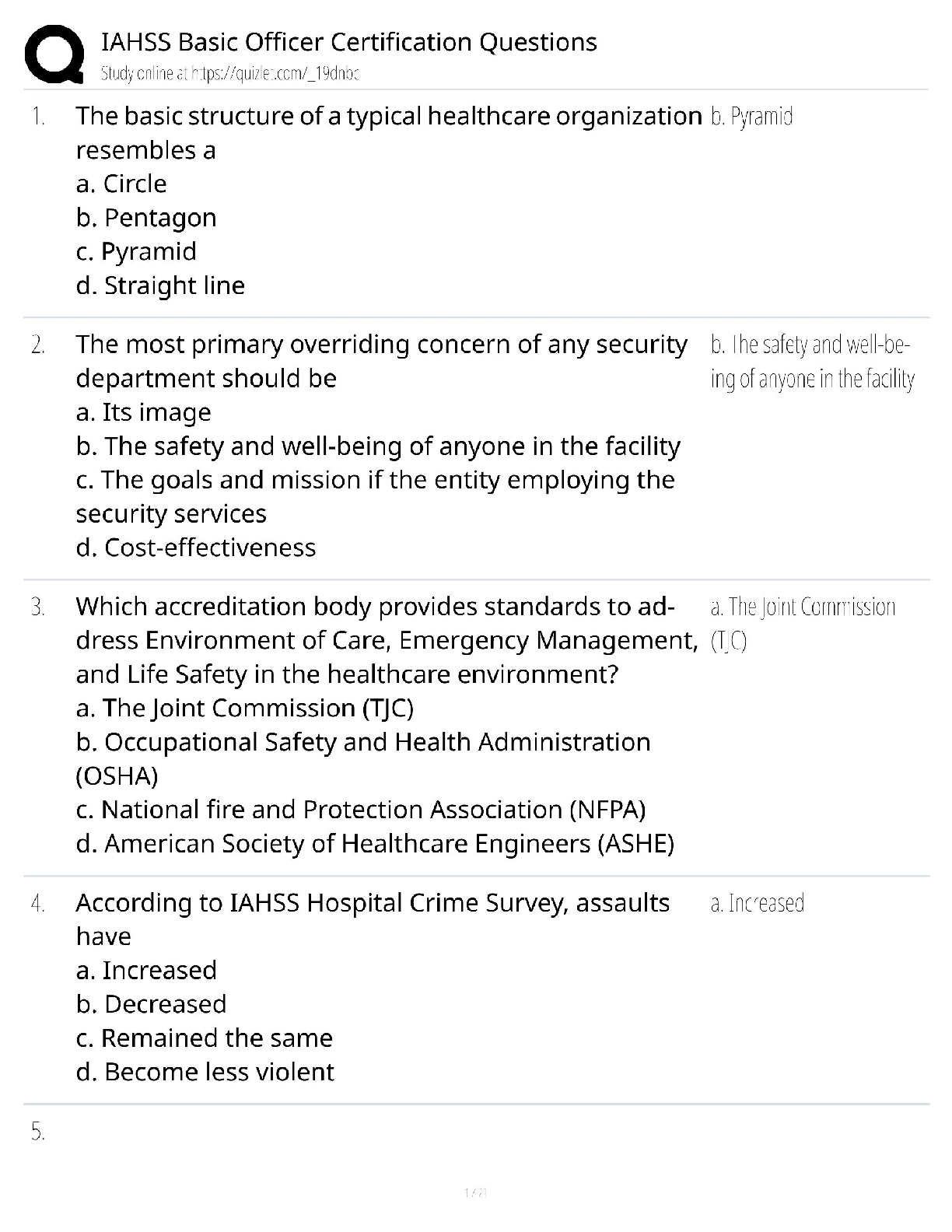NURS 6630 Week 3 DB Case # 29- The depressed man who thought he was out of options | Walden University
Document Content and Description Below
NURS 6630 Week 3 DB Initial Post (Week 3:
The Impact of Ethnicity on Antidepressant Therapy)
Case # 29- The depressed man who thought he was out of options.
• List three questions you might a
...
sk the patient if he or she were in your office. Provide a rationale for why you might ask these questions.
1. You stated that you had a relapse 5 years ago, after previously having a good response to your medication. During this time frame, was there an event that occurred in your life that may have contributed to this relapse? If so, what happened to cause this relapse?
2. In regards to life’s challenges and everyday stressors; how would you describe your coping skills with various situations that arise on a daily basis?
3. On a scale of severity, where 10 is the worst, you rated yourself a 9/10 over the past two years. Can you tell me what has emerged in your life during the past 2 years that has led you to rate your level of severity as a 9/10?
• Identify people in the patient’s life you would need to speak to or get feedback from to further assess the patient’s situation. Include specific questions you might ask these people and why.
.
1. Parents- What was the client like as a child? Was he diagnosed with depression during his child or adolescent years, or was he an adult? I am aware that there is a lineage of 1st-degree depression in the family, which family members particularly were diagnosed with the disorder? Did your son appear to be a happy child growing up through the years? Were there any traumatic events that the child witnessed or any event that directly happened or affected him that led up to the events of depression?
2. Wife- Over the years, you have been married to the client and noticed changes with his depressive state. Can you tell me at what point you noticed the client’s depression starting to become more evident? The client states a severity level of 9/10 on a severity level of 10 (worst) of the past 2 years. Can you expound upon what may possibly have led the client to rate the past 2 years as nearly his worst years? Are you around the client when he takes his medicine? If yes, is he normally compliant with his medication regimen? How have you noticed the client through the years in regards to interacting with the children, and now grandchildren? You mentioned, that your husband is letting go and giving up. Can you elaborate on why you feel this way? Has the client verbally stated this, or is this primarily based on your observation? Does the client participate in Activities of Daily Living (ADLs) at home?
3. Children- Were there ever any evident times when you knew growing up that your father was battling with depression? If so, could you expound upon a situation that occurred? Was your father present and active at local events and activities that were going on at school or sports functions? How would you describe the relationship that you had growing up with your father, as opposed to now? Are there any differences?
4. Boss- Did the client ever display signs or symptoms of depression in the workplace? Were there any actions that you can recall from the client that led you to give him time off from work due to his actions? How would you describe the client in terms of the job he conducted in the workplace, and how he got along with other co-workers?
• Explain what physical exams and diagnostic tests would be appropriate for the patient and how the results would be used.
In order to further assess and rule out the possibility of other medical disorders causing depression, there are physical exams and diagnostic test that would be appropriate to determine.
• List three differential diagnoses for the patient. Identify the one that you think is most likely and explain why.
• List two pharmacologic agents and their dosing that would be appropriate for the patient’s anti-depressant therapy based on pharmacokinetics and pharmacodynamics. From a mechanism of action perspective, provide a rationale for why you might choose one agent over the other.
• For the drug therapy, you select, identify any contraindications to use or alterations in dosing that may need to be considered based on the client’s ethnicity. Discuss why the contraindication/alteration you identify exists. That is, what would be problematic with the use of this drug in individuals of other ethnicities?
• If your assigned case includes “checkpoints” (i.e., follow-up data at week 4, 8, 12, etc.), indicate any therapeutic changes that you might make based on the data provided.
• Explain “lessons learned” from this case study, including how you might apply this case to your own practice when providing care to patients with similar clinical presentations
References:
Alsofyani, A. H., Alharbi, A. M. M., Alanazi, A. B. N., Alasous, K. A. A., Ageeli, R. A., ALZahrani, A. A. M., … Ahmad, G. M. (2017). Correlation between Vitamin D Deficiency and Depression. Egyptian Journal of Hospital Medicine, 69(8), 3134–1343. https://doi-org.ezp.waldenulibrary.org/10.12816/0042865
American Psychiatric Association. (2013). Diagnostic and statistical manual of mental disorders (5th ed.). Washington, DC: Author.
Dayan, C. M., & Panicker, V. (2013). Hypothyroidism and depression. European thyroid journal, 2(3), 168-79.
Effexor. (2007). Rx only. Retrieved from https://www.accessdata.fda.gov/drugsatfda_docs/label/2007/020151s046,020699s075lbl.pdf
Franklin, R., Zorowitz, S., Corse, A. K., Widge, A. S., & Deckersbach, T. (2015). Lurasidone for the treatment of bipolar depression: an evidence-based review. Neuropsychiatric disease and treatment, 11, 2143-52. doi:10.2147/NDT.S50961
Hage, M. P., & Azar, S. T. (2011). The Link between Thyroid Function and Depression. Journal of thyroid research, 2012, 590648.
Latuda. (2011). MPR (Pharmacists’ Edition), (1), 10. Retrieved from https://ezp.waldenulibrary.org/login?url=https://search.ebscohost.com/login.aspx?direct=true&db=edsgea&AN=edsgcl.253388046&site=eds-live&scope=site
Lloret-Linares, C., Daali, Y., Chevret, S., Nieto, I., Molière, F., Courtet, P., … Bellivier, F. (2017). Exploring venlafaxine pharmacokinetic variability with a phenotyping approach, a multicentric french-swiss study (MARVEL study). BMC Pharmacology & Toxicology, 18(1), 70. https://doi-org.ezp.waldenulibrary.org/10.1186/s40360-017-0173-2
Lynch, T. (2007). The Effect of Cytochrome P450 Metabolism on Drug Response, Interactions, and Adverse Effects. American Family Physician, 76(3)391-396. Retrieved from https://www.aafp.org/afp/2007/0801/p391.html
Stahl, S. M. (2013). Stahl’s essential psychopharmacology: Neuroscientific basis and practical applications (4th ed.). New York, NY: Cambridge University Press.
Stahl, S. M. (2017). The prescriber’s guide (6th ed.). New York, NY: Cambridge University Press.
Voican, C. S., Martin, S., Verstuyft, C., Corruble, E., Perlemuter, G., & Colle, R. (2016). Liver Function Test Abnormalities in Depressed Patients Treated with Antidepressants: A Real-World Systematic Observational Study in Psychiatric Settings. PLoS ONE, 11(5), 1. Retrieved from https://ezp.waldenulibrary.org/login?url=https://search.ebscohost.com/login.aspx?direct=true&db=edb&AN=115293329&site=eds-live&scope=site
[Show More]
Last updated: 8 months ago
Preview 2 out of 7 pages
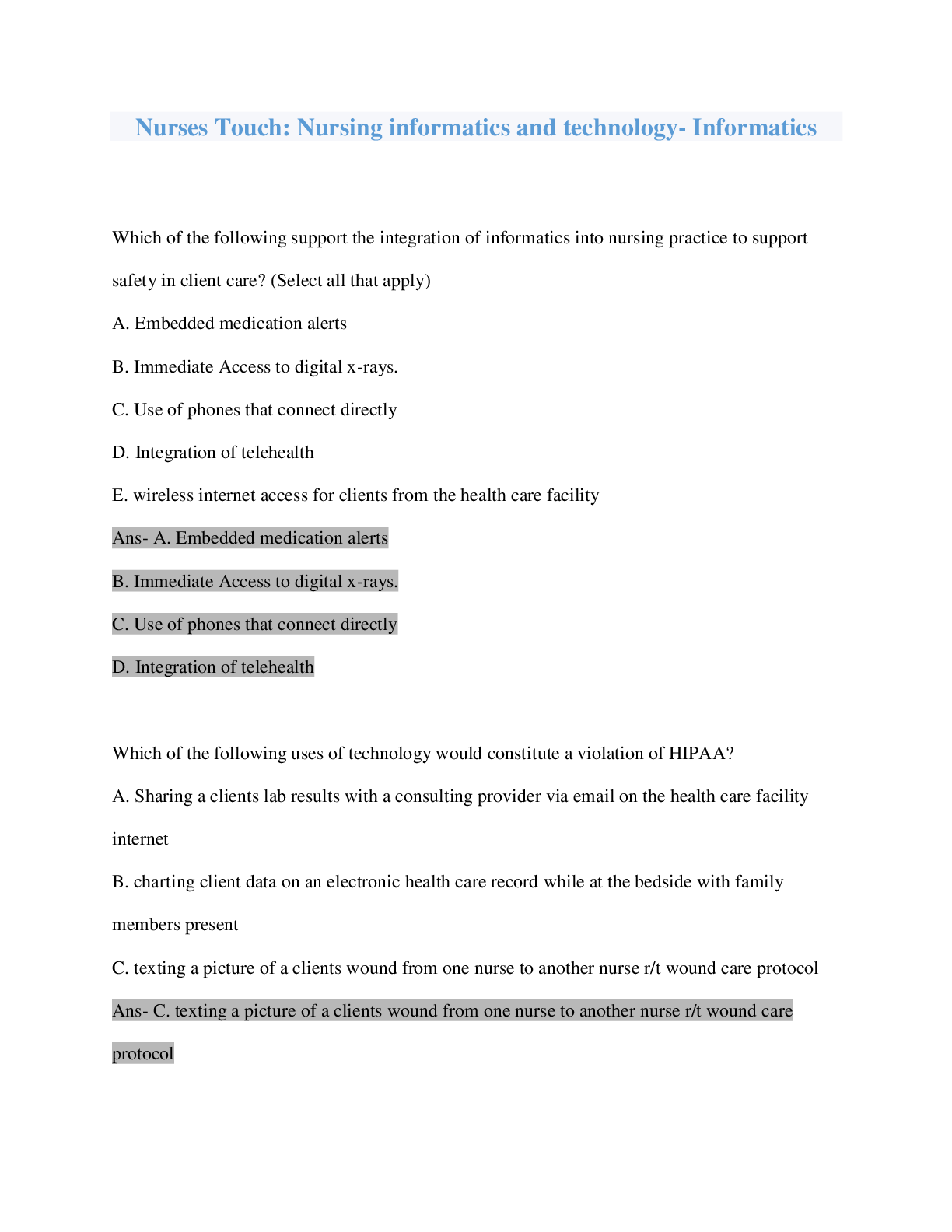


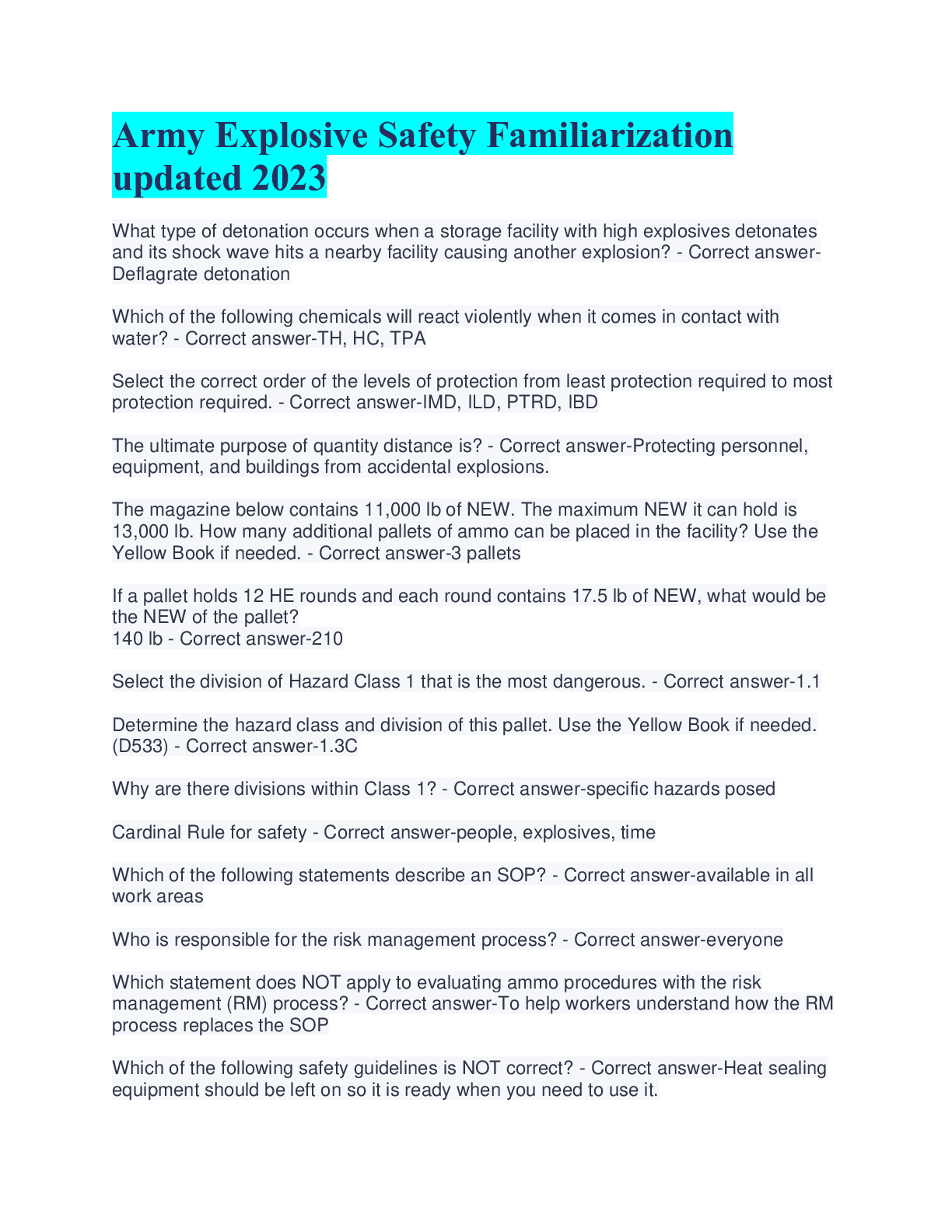
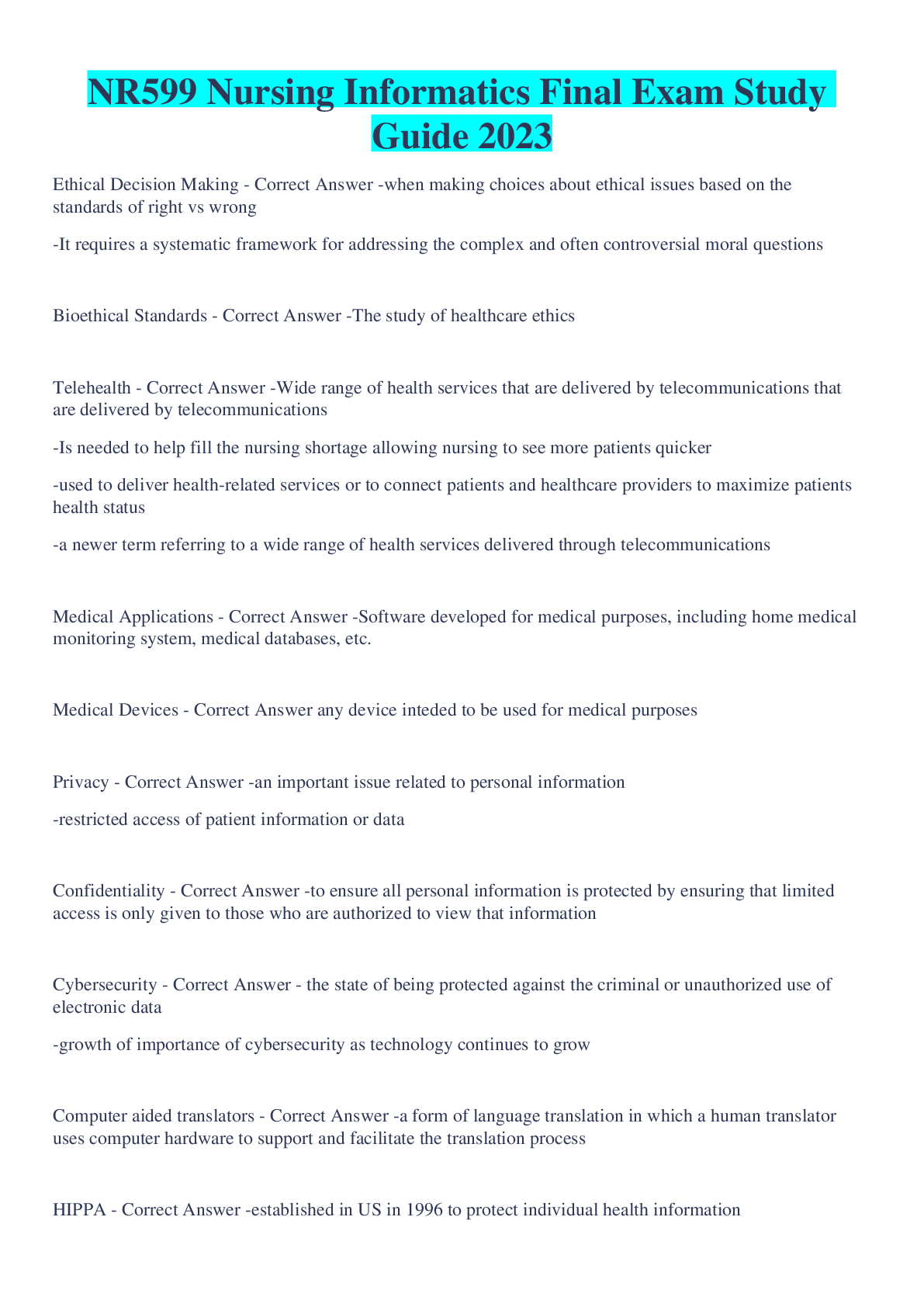
.png)



